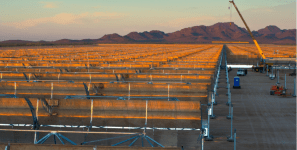Could Starlink Replace Fixed-Line Broadband for Business?
Starlink is Elon Musk’s satellite internet project enabled by his extremely successful SpaceX company. It’s a series of satellites, or ‘satellite constellation’ in the words of SpaceX, that will deliver global internet coverage when complete.
Which begs the question. Will Starlink replace fixed-line broadband for business?
What is Starlink?
Starlink has a laudable goal: to provide internet access to anyone, anywhere.
The satellite constellation will provide internet connectivity across the globe accessible using a satellite dish. So, no matter where you are and what fixed-line speeds you have, you’ll soon have another option.
The project is part of SpaceX, Elon Musk’s commercial answer to NASA. The company is steadily launching satellites into space to build their constellation, with a lot of coverage already in orbit.
Broadband speeds
As speed is so important in broadband, how will Starlink compare to fixed-line connections?
According to the Starlink website, download speeds will be between ‘100 Mb/s and 200 Mb/s’ and upload speeds of ‘around 40Mb/s’.
Compare that to the global average of 56.09Mbps download and 23.56Mbps upload and you’ll see quite the speed advantage.
Broadband latency
One hurdle Starlink has to overcome is latency, or ping time. That’s the delay in transmission between your router and the destination.
The more the delay, the longer you have to wait between clicking a button or taking an action and seeing it reflected on screen.
Traditionally, satellite broadband has struggled with latency due to the huge distances involved.
The further internet traffic has to travel, the longer the latency. Light travels at a finite speed and while fast, there is an inevitable delay in sending traffic from your computer to the satellite, across the constellation to a ground station, to the website or app and back again.
Starlink promises ‘latency as low as 20ms in most locations’, which is a significant difference to traditional satellite broadband.
It is able to achieve this by inserting satellites in a Low Earth Orbit (LEO), while most other satellite broadband orbits much further away. However, the downside of this approach is that you need more satellites to cover the same area, hence why Starlink has to use vast constellations of satellites.
Will Starlink link be the solution for rural businesses?
We would say Starlink could be ‘a’ solution for rural businesses rather than ‘the’ solution.
Most countries carry out continuous improvements on broadband networks, but it takes time and money.
That time and money is understandably spent in towns and cities first where providers can immediately begin recouping their investment. Rural areas usually come later, much later.
Starlink removes some of that delay.
Rural businesses are important to an economy but provide meager returns on investment. That’s something Starlink could genuinely change.
Around 2% of the UK’s rural businesses have less than 10Mbps broadband with no signs of a change anytime soon.
Starlink offers 10 times that and will be ready soon.
How does the UK compare to other countries for fibre coverage?
The UK currently has 24% full fibre coverage but falls behind many other countries.
Portugal has 77% full fibre coverage and Spain has pledged to reach 100% of ultrafast broadband by 2025. The US currently sits at 43% coverage while Germany sits at around 11% full fibre coverage.
What fixed-line connections are out there for rural businesses?
Fixed-line broadband options are few and far between. Depending on where in the world you live. You can compare fibre broadband deals with Broadband Genie but if none are available, you do have the option of a private leased line, community fibre project, community WiFi project or local fibre cooperative.
Private leased lines are very fast but very expensive. Community projects are not very common and fibre cooperatives or local fibre networks are even less common.
This is an area where Starlink could fulfill a genuine need.
How do the costs compare?
Alongside speed, cost is a primary consideration for any broadband customer. So how do fixed-line and Starlink compare?
Setup costs
Many fixed-line residential and business broadband contracts don’t have setup costs. Any costs incurred by the provider are built into the monthly fee to make them more palatable.
Business options such as leased lines can have setup costs but these are being phased out for the same reasons.
Starlink doesn’t advertise its setup or running costs but if you pre-order, you’ll see the figure of $600 (£439/€522) used a lot. That will include the satellite dish, WiFi router, cabling and base. That’s a pretty substantial amount compared to the minimal expense required for some other types of broadband.
Monthly costs
The monthly fee is the headline fee we all see when shopping around for broadband deals.
Monthly costs for fixed-line business broadband vary a lot. It could be as little as £20 (€23/$26) for 50Mbps (UK prices) and go much higher.
A leased line costs from £195 per month (BTnet Express) which is $262 or €232.
Starlink is currently not advertising monthly costs but the pre-order page says that it will cost around £89/€105/$119 per month.
Whether that fee will include data caps or not remains to be seen. We imagine it will, at least to begin with.
Those prices are not confirmed and may be cheaper in developing countries. It’s difficult to know for sure until the company formally announces pricing.
Is there a way I can reduce the cost of a leased line?
Leased lines are an expensive option for businesses but often the only way to access faster speeds. While many providers are phasing out installation costs, that monthly fee can be significant.
You can reduce the cost of a leased line by sharing it with other businesses. For example, if you work in a building with others, you could have a single leased line shared between you.
This would provide the speed you’re looking for while dividing the cost between however many companies share it.
Can I get Starlink broadband for my business?
Starlink isn’t available everywhere just yet so you may not be able to get it for your business.
The rollout is said to begin soon, with a limited rollout during Q4 2021 in the US. This is a limited rollout open to around 100,000 customers.
Uptake has been so good that there is currently a waiting list of over 500,000 people. This has led Starlink to delay open signups until mid-2022 or 2023.
A quick check on the pre-order page for the UK gives a date of ‘mid-2022’.
Coverage and availability
Coverage is expanding every time SpaceX launches more satellites but it’s spotty right now.
Rollout has been delayed somewhat by the ongoing global semiconductor shortages but the company says it is going as fast as it can.
Putting random addresses into the pre-order page gives those 2022 or 2023 dates while others, mainly in the US, gives a different message ‘Starlink is currently at capacity in your area, so your order may not be fulfilled until 2023 or later.’
Your best bet is to put your own address into the ‘Service Address’ box at the top of the Starlink website to see when it will be available in your area.
Starlink and fixed-line business broadband
There is no doubt that Starlink will definitely be a viable alternative to fixed line or mobile broadband, but not yet.
A combination of the huge scope of the project, semiconductor shortages and massive demand means you’re probably going to have to wait a while.
But, if you’re in a rural area or a slow broadband area, you’re probably well used to waiting for things, right?





Leave a Reply